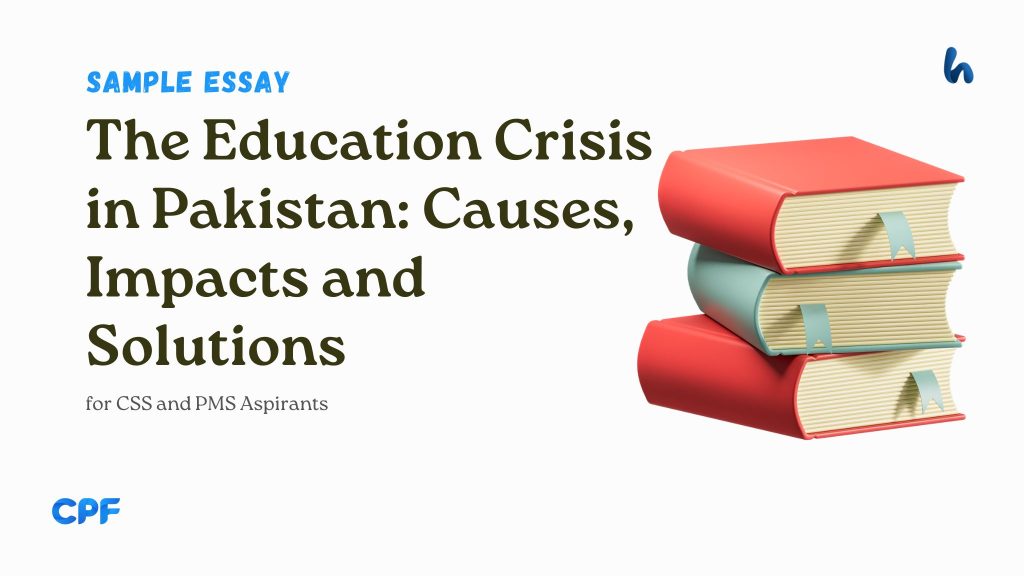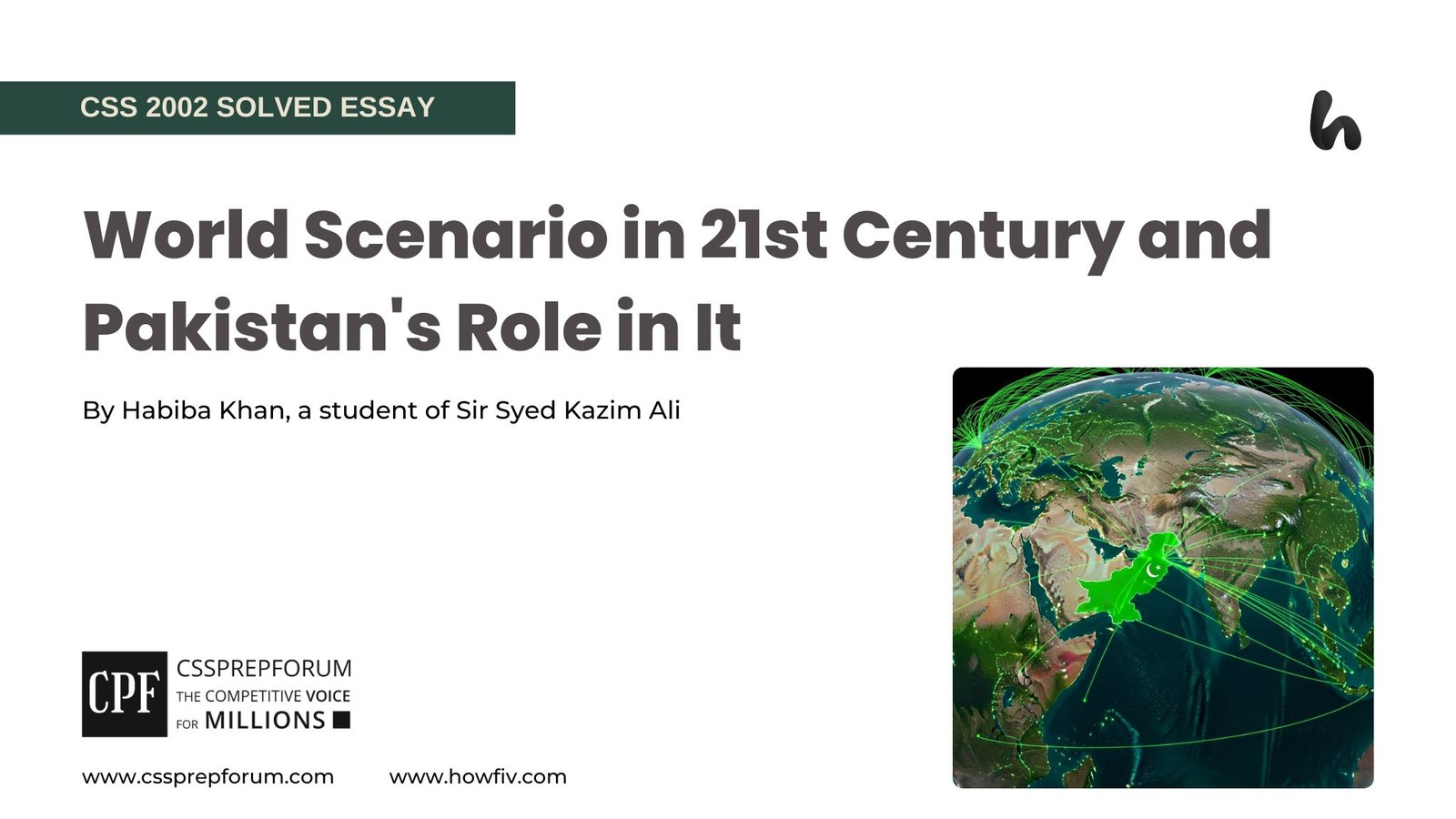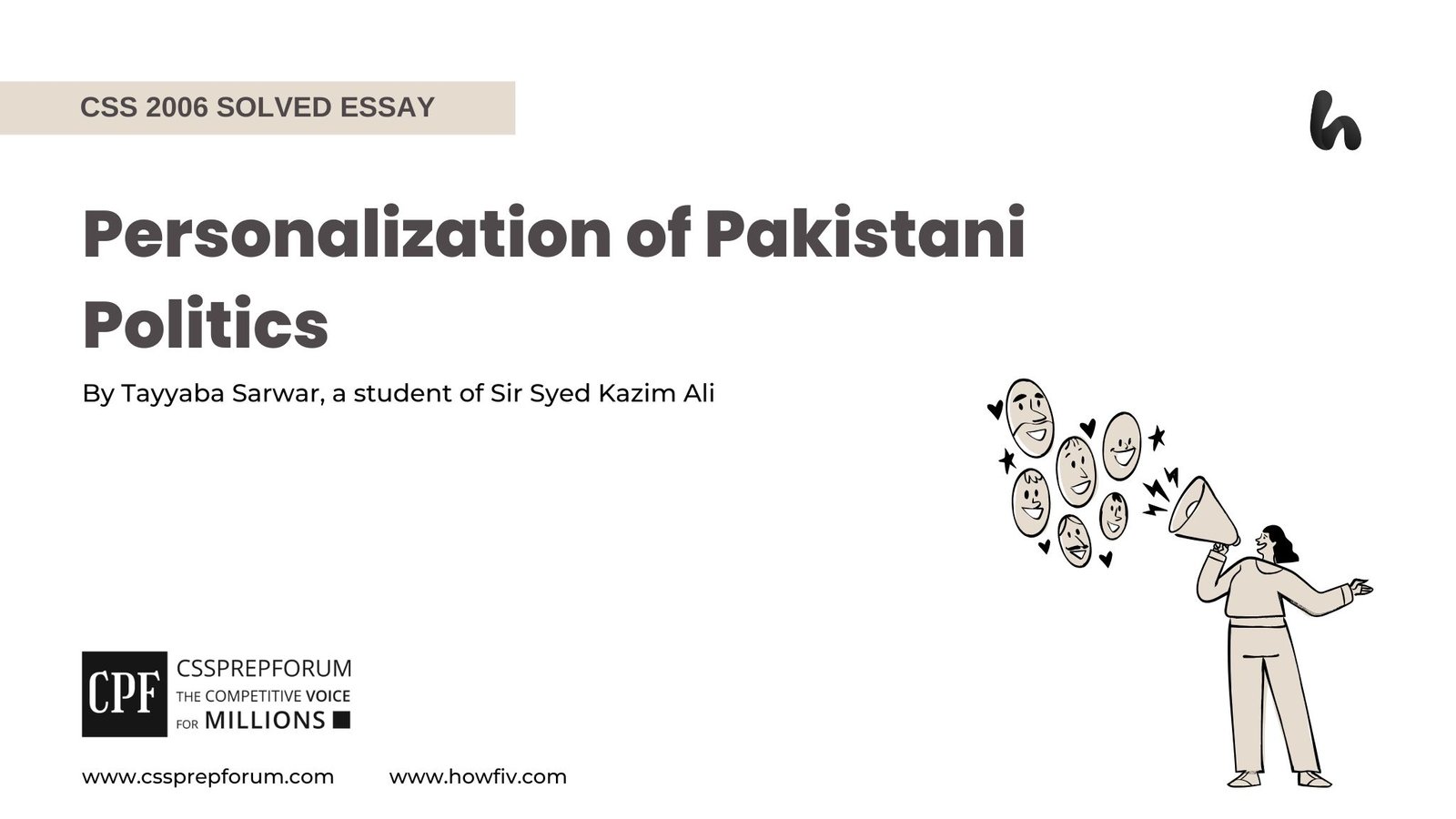Sample Descriptive Essay | The Education Crisis: Causes, Impacts and Solutions
Important Note
The sample essay is uploaded to guide my students in understanding the structure and nuances of writing an essay, particularly for competitive exams like CSS and PMS. This example lets you grasp the essential components of a well-crafted essay, including the outline, introduction, body paragraphs, critical analysis, and conclusion. So, it would help if you noticed how the outline is formulated to ensure coherence and logical flow throughout the essay. The introduction sets the tone by clearly stating the thesis, while the supporting body paragraphs provide evidence and arguments that build on this thesis. The critical analysis, which is key to standing out in competitive exams, evaluates different perspectives on the topic. Finally, the conclusion reinforces the main points, leaving a lasting impact on the reader. Study this sample essay thoroughly, as it reflects the standards I expect from you in your own writing.

Outline
Introduction
Decoding the term education and its purpose
Importance of education for a country’s progress
Current situation of Pakistan’s education system
The underlying triggers of our nation’s educational downfall
Low budgetary allocation
Evidence: According to Pakistan Economic Survey, Pakistan’s Federal budget for 2023-2024, the country allocating only 2.8% of GDP to the education sector, lower than the recommended 4 -6% by UNESCO
Political involvement and corruption
Evidence: Transparency International 2023 Report highlighting corruption and political involvement as main obstacles in Pakistan’s education sector
Lack of policy implementation
Evidence: Even after the adoption of more than 25 policies, the education system still failing to raise the nation socially and economically
The unnoticed impacts of Pakistan’s failing education system
Lagging Behind in Achieving Educational Objectives
Evidence: The UN Global Education Monitoring Report, 2016, concluding that Pakistan is 50 years in primary education while 60 years in secondary education behind achieving the educational goals
Declining Literacy Rates
Evidence: As Pakistan’s economic survey depicting, Pakistan’s literacy rate lagging 57% well behind its neighbouring countries
Regional Disparities
Evidence: According to the Sustainable Development Policy Institute (SDPI), unequal funding and facilities across provinces leading to significant regional literacy disparities
Recommendations to overcome the educational challenges
To increase budgetary allocation
To minimize political interference to reduce corruption
To ensure the effective implementation of education policies
Conclusion

Introduction-1
Education is the cornerstone of national progress, serving as the driving force that propels a country forward in the global race for development. However, when a nation experiences an education crisis, it severely hampers its growth, diminishing its prospects. Indeed, education is not merely a means of personal advancement but a powerful tool that elevates a country’s social, political, and economic standing. Unfortunately, Pakistan, as a developing nation, has tussled with deep-rooted issues in its education system for decades, leading to a failure to meet the aspirations of its people. The crisis in the country’s education system is multifaceted, with several contributing factors, such as chronic underfunding, weak policy implementation, pervasive political interference, and widespread corruption. These challenges have resulted in alarming consequences, including high illiteracy rates, the inability to achieve key educational milestones, and stark regional disparities in educational access and quality. Despite these daunting obstacles, there is hope for revitalizing the education sector by addressing these root causes through targeted interventions. Measures such as increasing educational funding, strengthening policy oversight, and curbing political meddling are essential steps toward reversing the crisis.
Introduction-2
Education, often seen as the great equalizer, has the power to bridge social divides and pave the way for national prosperity. In Pakistan, however, the education system has become a symbol of inequality and stagnation. The country’s chronic underfunding of education, spending just 2.8% of GDP, paired with deep-rooted corruption and political meddling, has left millions without access to quality learning. Consequently, as uneducated citizens struggle to contribute meaningfully to society, the education crisis has not only hindered individual achievement but also stifled the nation’s economic and social progress. Besides, the country’s failure to meet basic educational targets has led to declining literacy rates and significant regional disparities, particularly in underdeveloped provinces. But there is a way forward, as all hopes are not yet lost. Increasing budgetary support, enforcing stringent anti-corruption measures, and focusing on effective policy implementation are critical steps to revitalizing the sector. With the right interventions, Pakistan can transform its education system into a powerhouse for national growth, lifting its people out of the shadows and into a brighter, more unified future.
Introduction-3
Education is often described as the engine of national progress, driving innovation, economic development, and social stability. Yet, when the engine falters, as seen in Pakistan, the entire nation risks stagnation. Although education is the country’s future, Pakistan has been grappling with an education crisis for years that is more than just a bureaucratic challenge. With only 2.8% of its GDP allocated to education, far below the recommended 4-6% by UNESCO, the country’s schools and institutions are struggling to meet the needs of a rapidly growing population. The issue has not been born overnight; political meddling, corruption, and ineffective policies have exacerbated the problem, turning the education sector into a battlefield of competing interests. Consequently, this situation has led to widespread illiteracy, a failure to meet international educational benchmarks, and glaring regional disparities that leave entire provinces underserved. Yet, hope remains. Pakistan can transform its education system from a liability into a national asset by prioritizing reforms, boosting funding, and eliminating political interference.
Introduction-4
Education is the cornerstone of national progress, fueling a country’s ability to compete in the global arena. However, when a nation’s education system crumbles, it cripples not only current development but also future potential. Nevertheless, education is the driving force behind social, political, and economic advancement, yet Pakistan has long struggled with deep-rooted issues in its education sector. Decades of underfunding, poor policy execution, rampant political interference, and widespread corruption have severely weakened the system. As a result, the country has suffered from high illiteracy rates, an inability to meet crucial educational milestones, and glaring regional inequalities. Despite these challenges, there is a clear path forward. By increasing investment in education, strengthening policy enforcement, and reducing political involvement, Pakistan can reverse its educational decline and set the stage for long-term national growth. While the hurdles are significant, the right reforms, implemented with urgency, promise to revitalise the country’s education system and unlock the nation’s true potential.

Decoding the term education and its purpose
Before exploring the topic deeper, it is crucial to fully grasp the concept of education and its fundamental purposes. Education is not merely a process confined to formal schooling; it is a lifelong journey of acquiring knowledge, honing skills, and fostering intellectual growth. This journey, crucial for personal and professional development, cultivates critical thinking. At its core, education aims to empower individuals by enhancing their capabilities, nurturing their aspirations, and instilling essential values that guide their actions and decisions. Moreover, education is designed to ignite a sense of curiosity, encouraging individuals to explore the world with an open mind and seek knowledge that enriches their understanding of complex issues. It equips people with the tools needed to make informed choices, enabling them to contribute meaningfully to society. Through education, individuals are not only prepared to achieve their personal goals but are also inspired to participate in the creation of a just and sustainable society where everyone has the opportunity to thrive.
Importance of education for a country’s progress
Regarding the importance of education for a country’s progress, education serves as the bedrock of a nation’s progress, profoundly impacting its economic, social, and political development. Throughout history, whether in ancient city-states, mighty empires, or modern nation-states, one common thread in their success has been a solid commitment to education. Indeed, educated citizens are the lifeblood of a thriving economy, as they bring increased productivity, creativity, and innovation to the workforce, driving sustained economic growth. Beyond the economic advantages, education equips citizens with the knowledge and critical thinking skills to make informed political choices, engage actively in democratic processes, and hold their leaders accountable. This active participation is crucial for the health and stability of any democracy. Moreover, education fosters social cohesion by promoting mutual understanding, tolerance, and respect among individuals from diverse cultural backgrounds. This cultural sensitivity is vital in creating a harmonious society. Therefore, a robust education system is indispensable for a nation’s sustainable progress. It lays the foundation for economic prosperity, strengthens democratic institutions, and nurtures social unity. Without it, achieving long-term success and stability would be an arduous challenge, if not an impossibility.
Current situation of Pakistan’s education system
Currently, the education system in Pakistan is facing a significant crisis. It is divided into different types of schools catering to various social classes, including lower, middle, and elite. This division has created clear educational inequalities in the country. Despite implementing numerous policies since gaining independence, the education system has consistently failed to meet its objectives. According to the 2019 Human Development Report, Pakistan has made little progress in vital educational indicators such as literacy rate, gross enrollment ratio, and education investment, especially compared to its neighbouring countries. The literacy rate remains shockingly low at approximately 57%, and the disparity between rural and urban education continues to grow. The challenges have been further exacerbated by the COVID-19 pandemic, which has disrupted the learning process for millions of students and widened socio-economic gaps. It’s evident that the current state of the education system in Pakistan is far from the vision established by the nation’s founding leaders.
Before understanding what has happened to Pakistan’s education system and what impacts it has given birth to, it is crucial to know what has made the country’s education system ineffective. Below are several of the most significant causes of the country’s educational crisis.
The underlying triggers of the nation’s educational downfall
One of the most critical factors contributing to the educational crisis in Pakistan is inadequate financing, which is widely regarded as the backbone of any functional education system. The Pakistan Economic Survey highlights that the Federal budget for 2023-2024 allocated only 2.8% of GDP to the education sector, significantly lower than UNESCO’s recommended range of 4-6%. This insufficient funding severely hampers the ability of the education system to expand and improve, especially in a country with a rapidly growing population. As a result, inadequate financial resources remain one of the most prominent challenges, making it difficult for Pakistan’s education system to meet the needs and aspirations of its people.
Second, the pervasive political interference and corruption in the education sector significantly worsen the situation, eroding its very foundation. The Transparency International 2023 Report unequivocally states that corruption and political meddling are major roadblocks to progress in Pakistan’s education sector. These issues result in the misallocation and misappropriation of funds, fueling public discontent and contributing to the deterioration of education standards nationwide. Therefore, political intervention and corruption emerge as some of the most formidable barriers, further weakening the already precarious state of Pakistan’s education system.
Last but not least, another significant challenge to Pakistan’s education system is the lack of effective policy implementation. Despite adopting over 25 education policies since the country’s inception, the system continues to fall short in elevating the nation socially and economically. The repeated failure to enforce these policies has resulted in a stagnant education system that struggles to meet the needs of its population. This lack of implementation highlights a critical gap between policy creation and practical outcomes, further hindering the progress of Pakistan’s education system.
Having outlined the root causes of Pakistan’s education crisis, it is imperative to now turn to the often overlooked impacts of this failing system. These unnoticed consequences have far-reaching effects on the country’s social, economic, and developmental progress, and it is crucial to examine them. Below are several of the most consequential impacts of the country’s educational crisis.
The unnoticed impacts of Pakistan’s failing education system
First, Pakistan lags significantly in meeting its educational targets, falling behind both regionally and globally. According to the UN Global Education Monitoring Report (2016), Pakistan is 50 years behind in achieving primary education goals and 60 years behind in secondary education. This delay underscores the growing challenge of reaching the global goal of “Education for All,” leaving the current generation at a serious disadvantage. The data further highlights how the country’s ineffective education system has failed to equip students with the necessary skills and knowledge. Therefore, these alarming statistics result from the country’s weak education system.
Second, the country’s literacy rate is rapidly declining, now the lowest in the region. According to the Pakistan Economic Survey, the country’s literacy rate stands at only 57%, significantly lower than its neighboring nations. This means that nearly half of the population lacks basic reading and writing skills, which are essential for both individual growth and national development. The data also highlights the failure of Pakistan’s education system to equip its citizens with even the most fundamental skills. This stark reality clearly reflects the weakness of Pakistan’s education system and its detrimental impact on the country’s progress.
Last, the country’s failing education system has also exacerbated regional disparities, weakening social cohesion. Unequal distribution of funding and educational resources across provinces has led to significant variations in literacy rates, creating an imbalance in national development. According to the Sustainable Development Policy Institute (SDPI), these disparities are particularly pronounced in underdeveloped regions, further widening the gap between provinces. Given Pakistan’s diverse ethnic makeup, such inequalities threaten the country’s social integration, fueling tensions and division. Therefore, regional disparity is a major consequence of the country’s neglected education system, hindering both national unity and collective progress.
Despite these challenges, hope remains for Pakistan’s education system. The country can strengthen its social, political, and economic stability by implementing timely reforms. Advancing the education sector is key to unlocking Pakistan’s long-term growth and development. Below are some practicable measures to fix the issues present in the country’s education system.
Recommendations to overcome the educational challenges
For example, the state should increase its public expenditure on education. Adequate financial resources are essential for the development of infrastructure, the hiring and training of qualified teachers, and the provision of quality educational materials. Moreover, responsible resource distribution among provinces is crucial to ensure equal opportunities for all, reducing disparities and promoting nationwide growth. Hence, improving Pakistan’s education budget can transform its youth into a valuable asset, driving sustainable progress.
Next, strengthening policy implementation and enforcing a transparent accountability system can help Pakistan. This includes establishing monitoring mechanisms, addressing inefficiencies, and holding institutions accountable for their performance. Moreover, a relevant person with experience should be hired for the process of policy formation and implementation. Hence, following this will help the country resolve the issue of policy implementation from its roots and, ultimately, enhance the education system in Pakistan.
Furthermore, the reduction of political interference is a key strategy in the fight against corruption within the education sector. The establishment of independent educational bodies, free from political influence, is a crucial step towards ensuring that resources are distributed based on need rather than political favoritism. Strengthening legal frameworks and enforcing anti-corruption laws can further bolster this effort. By ensuring that resources are distributed equitably and transparently, we can create a more stable and effective education system that benefits all students, providing a sense of reassurance about the fairness of resource allocation.
Conclusion
In conclusion, Pakistan’s education system faces significant challenges that threaten its social, economic, and political future. The causes, such as chronic underfunding, political interference, and weak policy enforcement, have led to widespread illiteracy, educational disparities, and a failure to achieve key developmental goals. However, all hope is not lost. By increasing educational funding, minimizing political meddling, and ensuring the effective implementation of policies, Pakistan can revitalize its education sector. These reforms are essential not only for the country’s sustainable development but also for fostering national unity and social cohesion. With timely and decisive action, Pakistan can transform its education crisis into an opportunity for long-term progress.
| Sample Descriptive Essays |
| The Education Crisis: Causes, Impacts and Solutions |
| Education System of Pakistan: Challenges and Opportunities |
Click on Any to Start Reading
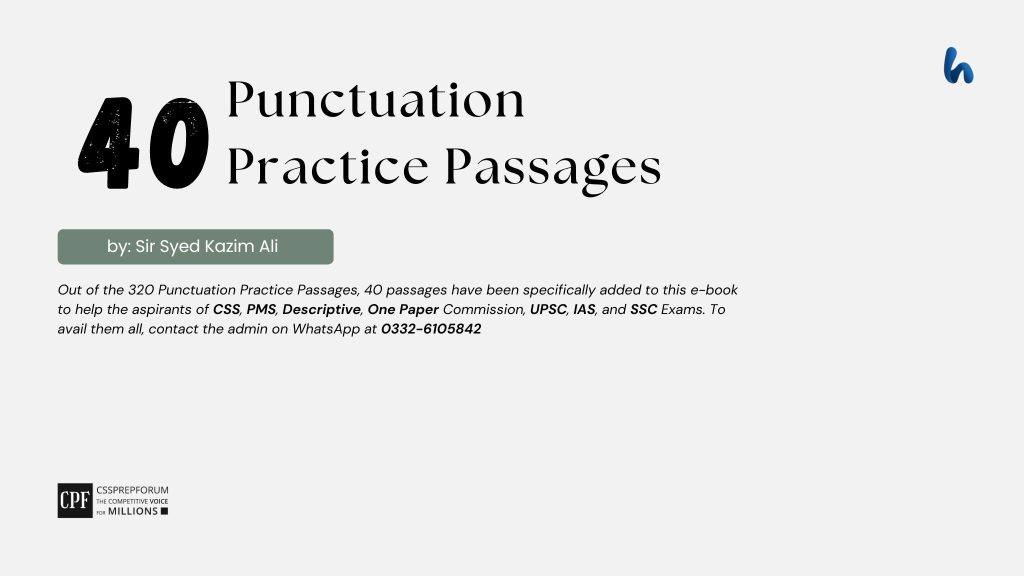
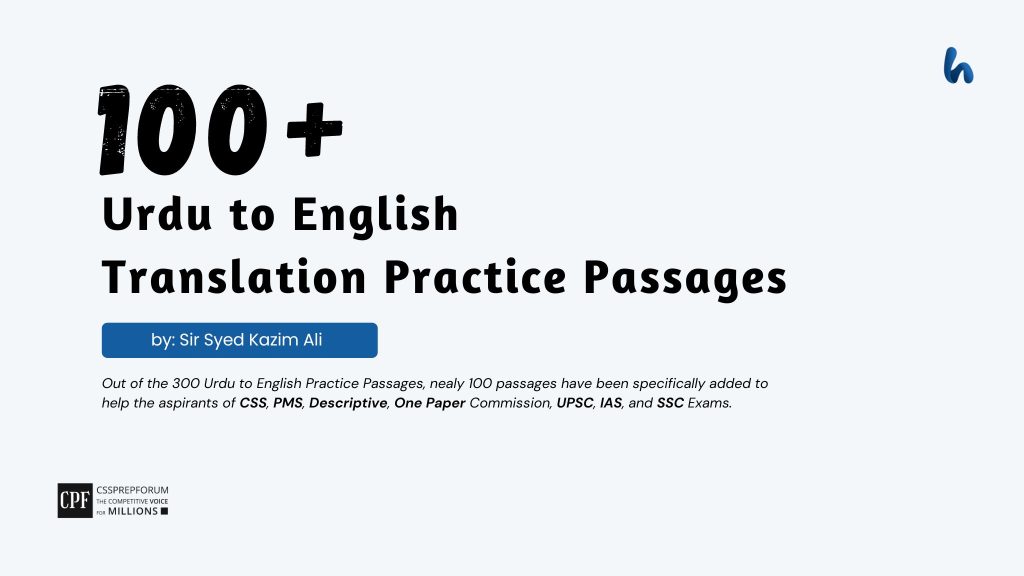


CSS Solved Past Papers’ Essays
Looking for the last ten years of CSS and PMS Solved Essays and want to know how Sir Kazim’s students write and score the highest marks in the essays’ papers? Then, click on the CSS Solved Essays to start reading them.
CSS Solved Essays
CSS Solved General Science & Ability Past Papers
Want to read the last ten years’ General Science & Ability Solved Past Papers to learn how to attempt them and to score high? Let’s click on the link below to read them all freely. All past papers have been solved by Miss Iqra Ali & Dr Nishat Baloch, Pakistan’s top CSS GSA coach having the highest score of their students.

